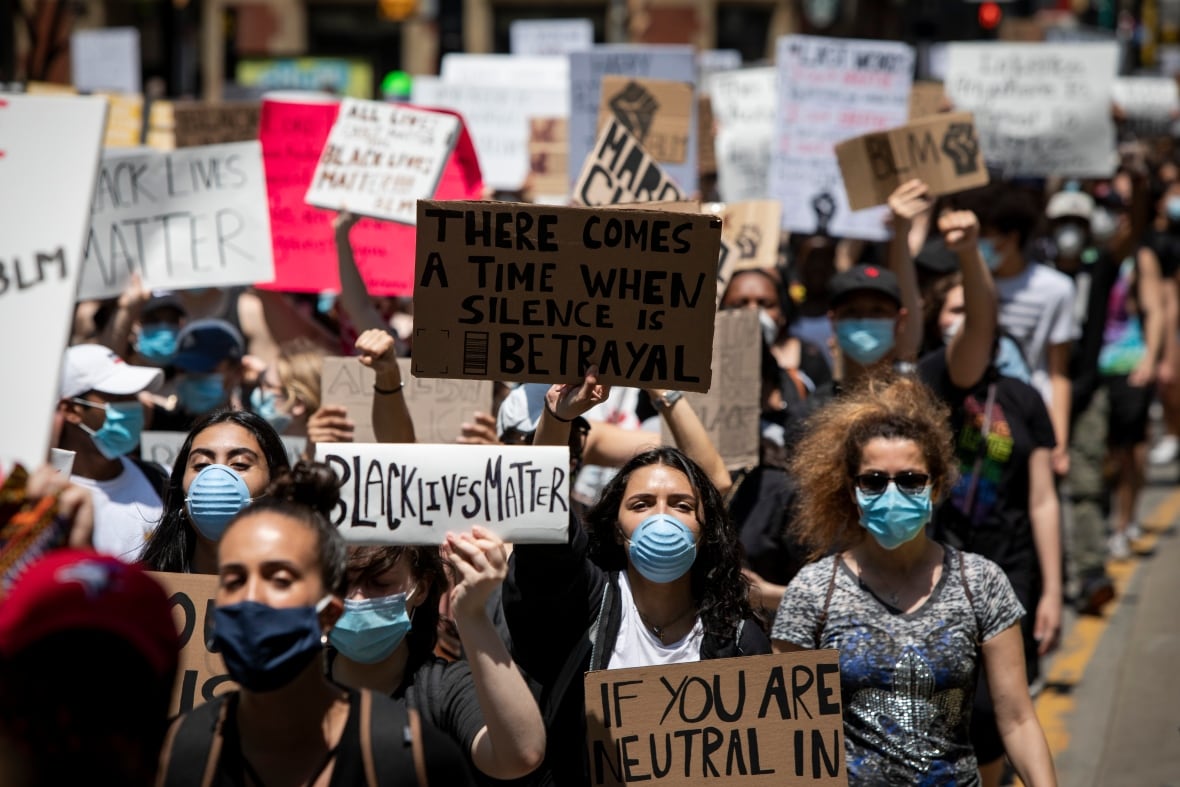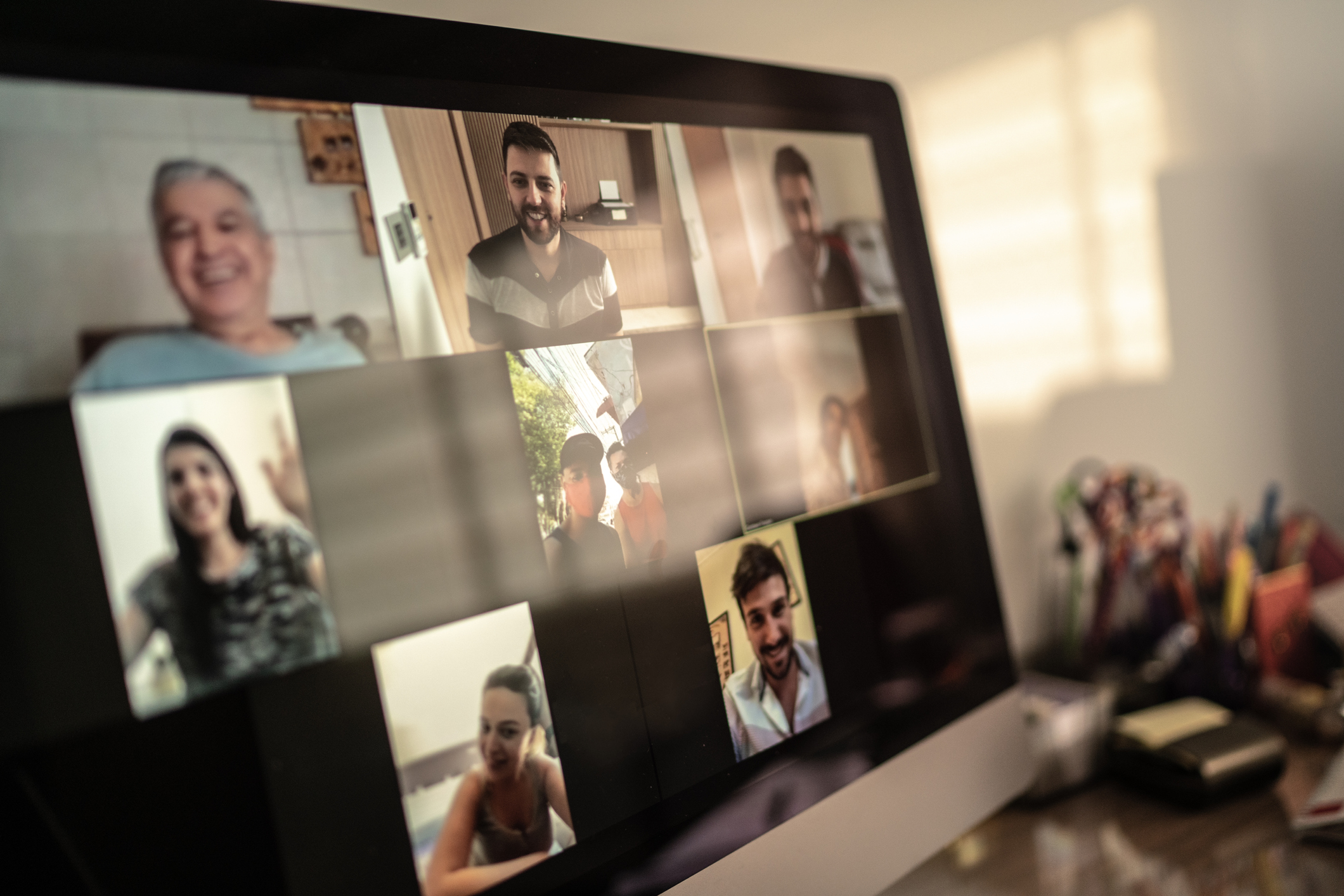Half a year has passed since killing of George Floyd in U.S. set off global reckoning with anti-Black racism.
By Brodie Fenlon, Editor in Chief, CBC News
It’s hard to believe nearly half a year has passed since George Floyd, a Black man, was killed after being arrested by a white Minneapolis police officer who had pinned the man’s neck to the ground with his knee.
At the time, the United States, politically polarized and already under siege by the COVID-19 pandemic, erupted in protests against anti-Black racism. A racial reckoning soon swept the globe.
I wrote then about the pain and frustration felt in our newsrooms and by our audiences. Black, Indigenous and other people of colour inside and outside the CBC said they were fed up with systemic racism and the way it manifests in all aspects of a white-dominated news media, from the stories and voices that don’t get heard, to a default deference to police and authorities, to the lack of racial diversity in our leadership ranks.
EDITOR’S NOTE: On George Floyd’s death, journalism and inclusive newsroom
While considerable work had already been done at the public broadcaster, we recommitted to further change and growth, promising that we would not stop the work, even when other events knocked the story out of the headlines.
Early on, we met with leaders of the Canadian Association of Black Journalists and Canadian Journalists of Colour, two groups that had issued in January — long before Floyd’s death — calls to action to Canadian newsrooms to demand a better reflection of the country’s racial diversity. In that meeting, it was suggested I use this editor’s blog to share more widely the work CBC News is doing.

Actions taken so far
Here, then, is an update on some of the actions our people are taking to make CBC more inclusive and our journalism more accurate, authentic, relevant and meaningful to more people:
• Inclusive Newsroom Pilot: We are running an eight-week pilot in our local newsrooms in Ottawa and Quebec. Helen Evans, managing editor for Quebec, and Ontario senior managing director Ruth Zowdu have been working closely with CBC’s engagement and inclusion team to create a program aimed at equipping leaders with thoughtful approaches and tools to run teams that are truly inclusive of people from all cultures and racial backgrounds. The underlying belief is that if more people are part of editorial discussions, our newsrooms and programs will be great places for everyone to work, and our content will connect with a wider range of people, too.
• Content Tracking: About a dozen teams across the country, including at The National, CBC News Network, CBCNews.ca, our investigative unit, all network radio talk programs, local news and current affairs programs, are involved in pilots to track who is represented in our stories. The goal is to better reflect our audience. Participating teams measure their stories across a number of diversity indicators, including race and gender, to get a baseline and identify areas for improvement. At the end of the day, we want to broaden and deepen our journalism so our stories are more relevant to more Canadians. And we want to ensure Canadians of colour are included in our coverage as experts and subjects in any type of story we do, not just stories about their culture, race or gender.
• Chasing Diversity: Every day, our program teams “chase” guests to appear on air and respond to live events and breaking news as they happen. In order to diversify the voices in our programming, our network’s chase team is exploring ways to strengthen our guest database to incorporate new or emerging voices from underrepresented groups. We are also publishing a “Reflecting Canada — Chasing Diversity Newsletter” and have developed a half-day virtual workshop to help program teams build content tracking and representative chase into their daily operations.
• Being Black In Canada: We launched CBC’s Being Black In Canada website, where you can find stories and specials from the public broadcaster on the experiences of Black Canadians.
• Hiring and Promotion: In the spring, CBC News, Current Affairs and Local committed that one of every two hires and promotions in our department, at all levels, will come from underrepresented groups. We are on track to exceed that goal: more than 60 per cent of hires or promotions in the past eight months have been Black, Indigenous or people of colour, including important positions on the senior team that sets the strategy and direction for our department.
• Journalistic Standards and Practices: We are reviewing our “JSP” through the lens of inclusion to determine if and where we need to provide greater clarity on our expectations around the use of social media, outside activities, the expression of opinion and our style guide. About 65 staff are now involved in working groups with managers.
• Training: We are rolling out training for senior leaders on intercultural awareness and cultural intelligence, as well as mandatory unconscious bias training for newsroom leaders.
• Opportunities: We are looking at ways to increase the opportunities for Black, Indigenous and journalists of colour to enter the profession and advance through the ranks. We have joined with the Canadian Journalism Foundation (CJF) to launch a new Black Journalism Fellowship, building on the success of the CJF-CBC Indigenous Journalism Fellowships that have helped foster the careers of 11 Indigenous journalists since 2014. And CBC’s successful Developing Diverse Emerging Leaders, or DEL, program will continue this year. The program has graduated 46 staff who are also members of diverse groups, specifically, visible minorities, Indigenous peoples and people with disabilities. Several have gone on to leadership positions in the corporation.
• Newsgathering: We announced last month plans to post national network reporting positions in Canada’s North and in a permanent bureau in India. Again, the aim is to broaden and deepen our journalism in parts of this country and the wider world underrepresented in Canadian media.
These are just some of the many steps we are taking at CBC to become a more inclusive news and current affairs organization on radio, television and digital.
The intent is to keep the public at the centre of public broadcasting and to ensure our journalism truly represents this country. That is our mission, and that is our promise.
EDITOR’S NOTE: What trusted journalism looks like in the age of disinformation, polarization

About the author
Brodie Fenlon is editor in chief and executive director of daily news for CBC News.
Originally published on CBC News. Republished with permission of CBC/Radio-Canada.
Header Image: Entrance to Canadian Broadcasting Centre in Toronto, headquarters of the Canadian Broadcasting Corporation (CBC). Credit: JHVEPhoto/iStock
Related Posts
7th October 2020
CBC/Radio-Canada launches initiatives to support diversity, local journalism
Public media must be responsive. This…
21st September 2020
Audience engagement and public media during COVID-19
Engaging with audiences is essential if…
26th March 2020
Insight | An update on local services and all the ways to access COVID-19 information on CBC News
Everything from a new email destination…


